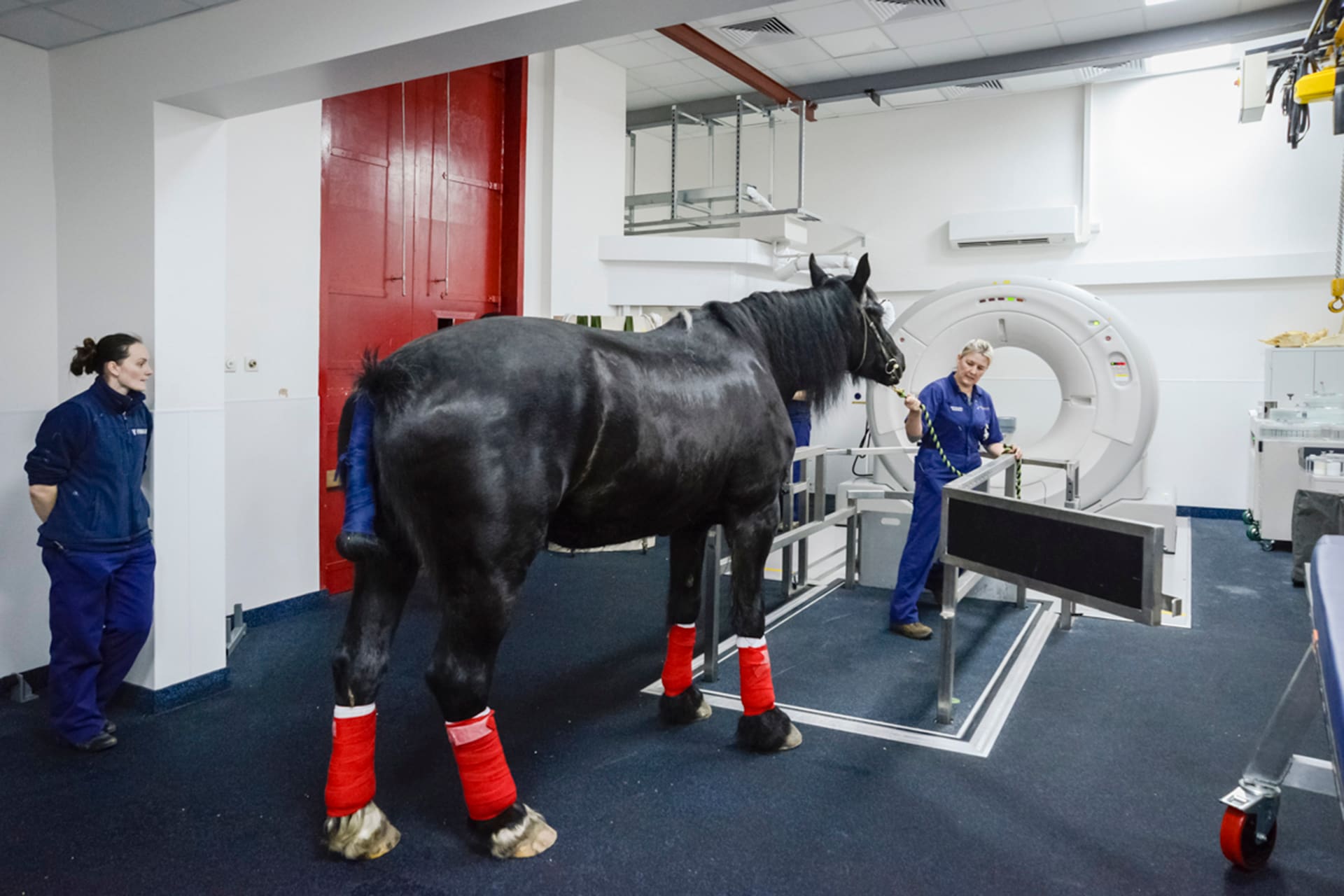Computed Tomography (CT) imaging
CT is a type of advanced imaging that uses the same type of technology as X-rays but it provides 3 dimensional (3D) images. This involves the same type of CT scanners that are used in human hospitals. We have a purpose-built CT imaging suite with a 90cm wide bore gantry, the largest size available for horses in the UK. Our state-of-the-art system is one of only a few similar systems in the world.

What is CT used for?
Our wide-bore gantry and imaging system enables us to perform CT imaging of many areas of horses and other large animals. Our hospital CT scanner has been specially adapted to enable us to image parts of the body that cannot be imaged using smaller CT scanners. CT scans can be performed with horses standing (sedated) or recumbent (asleep under general anaesthetic) depending on the area that needs to be imaged.
When are CT scans needed?
CT scans provide us with greater detail of the bone and other tissues. This allows us to assess areas that are not easily imaged with more common forms of imaging (x-rays or ultrasound). CT scans can also help us to reach a diagnosis in more complex cases, enabling us to provide a treatment plan and prognosis.
What areas can be imaged in horses and other large animals?
The most common areas that CT is used to scan in the horse include the head, teeth, neck and legs. These scans can also help us to plan more complex surgical procedures such as fractures of the head and legs.
How are CT scans obtained?
The head and upper neck can be imaged in the standing horse. Horses require sedation to keep them relaxed and standing still (to avoid movement which affects the quality of the scan) whilst the scan is obtained. The scan itself may only take up to 60 seconds to perform.
Under a general anaesthetic, we can obtain CT scans of the neck up to the level of the thoracic spine, upper limbs such as elbows and stifles as well as the pelvic area. This is a more involved procedure performed in conjunction with our hospital team of specialist veterinary anaesthetists and our nursing team. This multi-team approach helps to maximise safety for our patients.
What happens after a CT scan?
CT images are reviewed by our diagnostic imaging specialist who provides a written report. This involves in-depth assessment of multiple scans and can take several hours to perform. Once the report is received, our team of hospital specialists will discuss options for ongoing care with the owner and in conjunction with their usual veterinary practice.
Depending on the reason for the scan, horses may go home later that day for scans that can be performed under standing sedation, or they may stay in for further treatment.